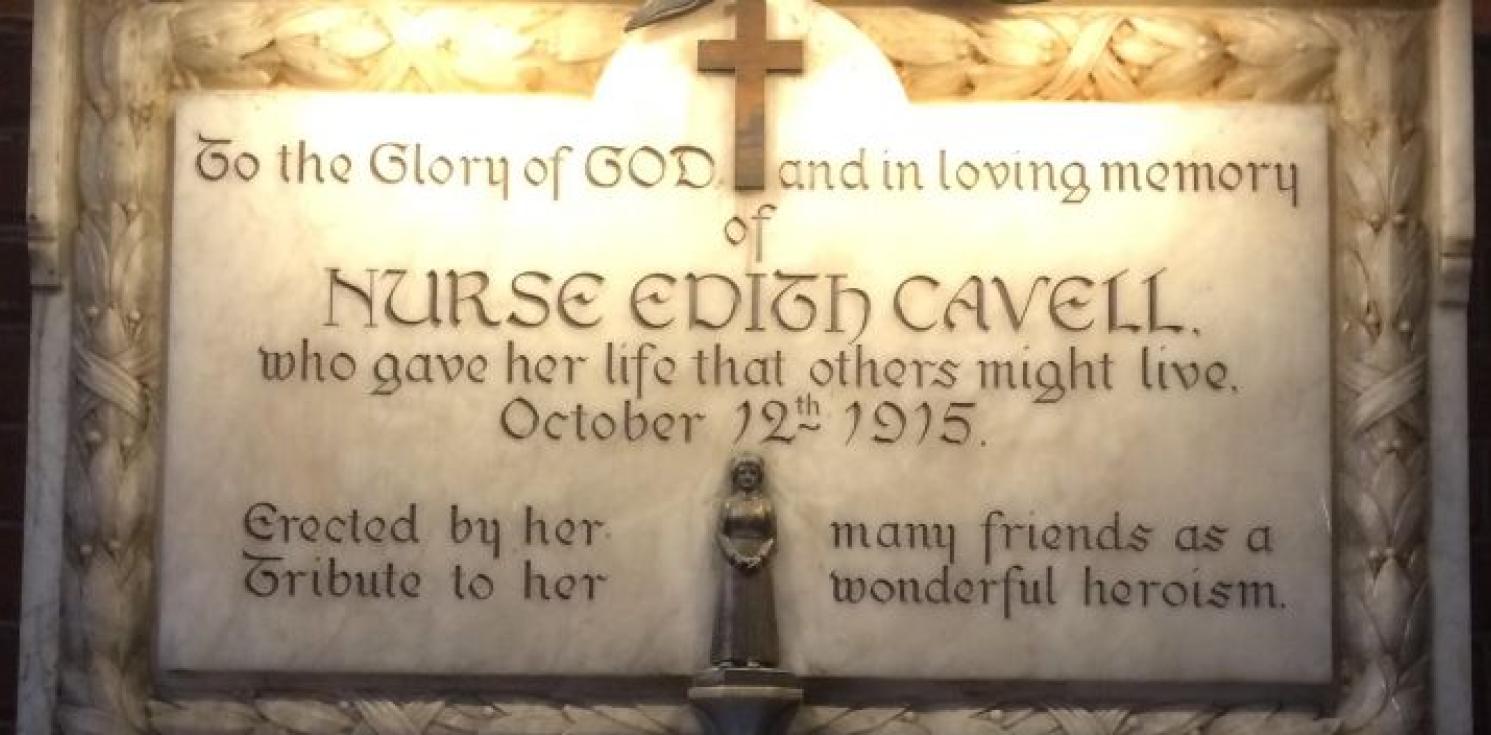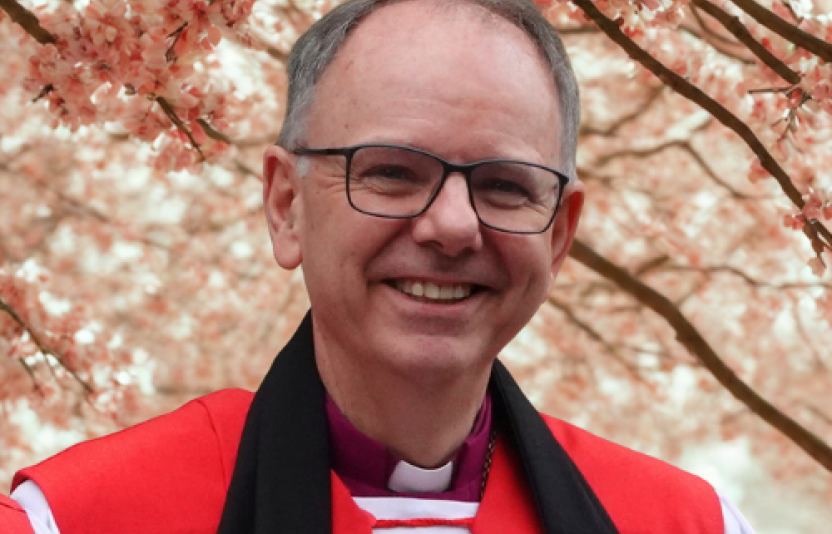Edith Cavell

The Diocese has held services in Belgium to mark 100 years since nurse Edith Cavell’s mortal remains were repatriated to the UK, on 13 May 1919.
At Holy Trinity, Brussels, Edith Cavell, who attended the church there, was remembered; the anniversary of her execution in Brussels is commemorated annually at Holy Trinity pro-Cathedral, where there is also a plaque (pictured).
There was also a special ecumenical service on 12 May at St Petrus & Paulus Ostend. Edith Cavell’s mortal remains passed through the port of Ostend one hundred years before. This service was organised by the Anglican Church and the Roman Catholic Church in collaboration with the Belgian Edith Cavell Commemoration Group (BECCG) and Ostend City Council. The original plan was to hold the service at the English Church, Ostend, but due to ongoing restoration of the building, the venue instead was St Petrus and Pauluskerk.
The service was attended by Her Excellency Alison Rose, British Ambassador to Belgium, and by the Mayor of Ostend, Bart Tommelein and members of the City Council.
The service also commemorated VE day, with representatives of the Armed Forces in attendance and members of the British Legion, several of whom had travelled from England for this occasion. A parade of military personnel, veterans and Legion members was held immediately after the service with wreath-laying at various war memorials.
The service itself was dignified and thought-provoking, with standard bearers leading the procession. The service was led by Father Johannes Mwanba of the Catholic Church and Anglican Chaplain, Father Augustine Nwaekwe. You can watch a short video here.
The two priests welcomed all present in Dutch and English. Prayers of Penitence were said in both languages. Isaiah chapter 43, verses 1-7 was the first reading and the Gospel reading was St John chapter 10, verses 27-30.
Andrew Brown, Chair of the Belgian Edith Cavell Commemoration Group spoke of Edith Cavell’s life in Brussels, her strong Christian faith, her trial and execution, and the dignity with which her mortal remains were taken back to England. The hymn “Abide with Me” sung by Edith Cavell herself and her priest only hours before her execution was then sung in English.
Prayers of Intercession were led in both languages. The Eucharist prayers were said in Dutch with a section in English. The Lord’s Prayer was printed in both languages.
During Communion, “Blijf mij nabij” which is a Dutch translation of “Abide with Me” was played by the organist, with two verses printed in Dutch for the congregation to sing. Closing prayers and the blessing were given by the priests and the service ended.
The commemorations continued outside the church followed by a parade through the centre of Ostend by the Town Band.
In the Town Hall there were speeches by Andrew Brown and the Mayor of Ostend. The latter spoke movingly of the need for young people to know of Edith Cavell’s life and also of the need to work for peace each and every day, as individuals and as a society. An Ostend street sign of ‘Edith Cavellstraat’ was presented to Andrew Brown, the street named in memory of Edith Cavell after the First World War.
Fr. Augustine said:
“A reception after the service and speeches provided the opportunity to meet and share with Belgian and British civil and church community. The events were thoughtfully planned and showed a continuing shared community and cooperation between Belgian and British citizens and officials, as well as an active ecumenical spirit within the Anglican and the Roman Catholic Church in Ostend.”
From 26 April to 13 May there were exhibitions on Edith Cavell at the City Hall of Ostend. More exhibitions are being planned for 2020 at the English Church, Ostend on Langestraat, when the building has been fully renovated.
About Edith Cavell:
Edith Cavell, a British nurse opened Belgium’s first nursing school in Brussels in 1907. When World War One broke out in 1914, she stayed, nursing wounded Belgian, British and French soldiers. She equally helped them to escape to neutral Netherlands through an escape network which she and others had established. She was arrested in August 1915, tried and executed on 12 October that same year by a German firing squad at the Brussels ‘‘National Firing Range’’. After the end of World War One, on 17 March 1919, her body was exhumed from her grave. On 13 May 1919, her coffin was conveyed from Brussels North Station by train to the port of Ostend after a service conducted by the Reverend Stirling Gahan. The solemnity and dignity that accompanied the journey from Brussels to Ostend, crossing the English Channels to Dover, London and Norwich was unprecedented.
On the arrival of Edith Cavell’s body in the UK, New York Times wrote the following day: ‘‘No triumphant warrior and no potentate could have received a more impressive tribute than was paid today to the mortal remains of Miss Edith Cavell as they were borne through London’’.
You can find out more about Edith Cavell at:


